5 Best Small Riding Lawn Mowers for Your Garden - 2023 Guide
Written by Ivy
Dec 29 2022
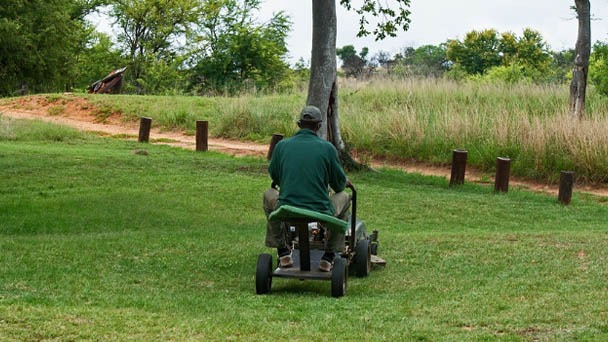
The smallest riding lawn mower available is the one made by Snapper, measuring just 28 inches. Nevertheless, there are other compact mowers that, depending on what you need a riding mower for, might be worth investigating. Therefore, there are also some great options from PoulanPro, Husqvarna, Troy-Bilt, Weibang, etc.
The best small riding mowers and tractors, fortunately, can reduce the amount of time you need to spend trimming your lawn. Some even make mowing enjoyable (hi, cup holders and cruise control!)
Quick Overview
- Best Small Riding Lawn Mower Overall - Husqvarna Z242F
- Best Small Riding Lawn Mower for Compact - Greenworks 60V CrossoverT 42in Riding Mower
- Best Small Zero-Turn - EGO Power+ Z6 42 In 56V Zero Turn Mower
- Smallest Riding Mower - RYOBI 48V Electric Rear Engine Mower 30-In
- Best Small Riding Lawn Mower for Budget - Snapper 2911525
Best Small Riding Lawn Mowers for Your Garden
1. Best Small Riding Lawn Mower Overall - Husqvarna Z242F
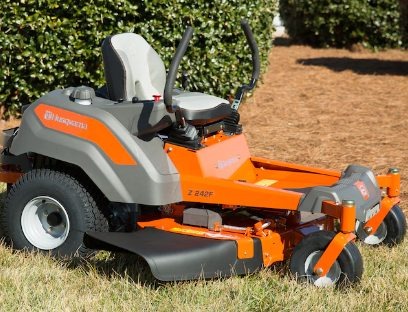
When cutting medium- to large-sized lawns, this machine cuts them incredibly quickly. It provides a robust performance and is comfortable to sit on.
There is no denying the Husqvarna Z242f's power. This mower has an 18hp Kawasaki engine from their FR series (which is where I think the "f" in The Kawaski engine has a top speed of nearly 7 miles per hour and has a range of 2.2 acres per hour (where Z242f)
This engine offers almost all of the services you might require for a residential property. No complaints from a power standpoint; this will provide more than enough power to cover a large area of land.
What size cutting deck do you require is one thing to think about with this mower and the Z200 series as a whole. The 42-inch cutting deck on the Z242f will leave behind three and a half feet of mowed grass. As you think through your land, consider a few things:
- You will want to be more nimble as there are more obstacles in your way. Going above a 42 inch deck will require some serious agility if you have a lot of trees, flowerbeds, or other structures.
- Consider using a larger deck than a 42 inch deck if you have acres of open land and are making straight passes over straight passes. You will gain an additional foot and a half with each pass if you increase to a 60 inch deck. Once you've made a few passes, this foot and a half will add up significantly and save you time. And time is money.
2. Best Small Riding Lawn Mower for Compact - Greenworks 60V CrossoverT 42in Riding Mower
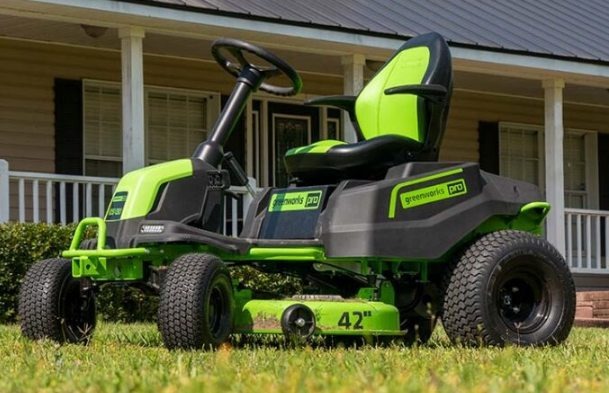
This is the pick-up crop of compact riding lawnmowers for residential use. up to 2.5 acres, exceptional performance.
The twin blades on the Greenworks lawn tractor can spin at 3,000 RPM and have the power of a 24-horsepower gas model. While wet grass can be problematic if it's too thick, we didn't experience any bog downs at those speeds in dry grass. This works best for lawns that you regularly maintain without going more than a week without watering.
According to Greenworks, depending on the deck size and drive speed, you can cut up to 2.5 acres in an hour. We set the deck to 2.5 inches and started cutting quickly to test this. We were able to get one hour and two minutes of nonstop runtime under our conditions, which were dry with a medium-light overall cut. The mower went into limp mode when the batteries reached 5% of their capacity.
Greenworks' estimate of 2.5 acres is reasonable under ideal circumstances with cutting speeds up to 5 MPH (the top speed for transport is 8 MPH).
3. Best Small Zero-Turn - EGO Power+ Z6 42 in 56V Zero Turn Mower
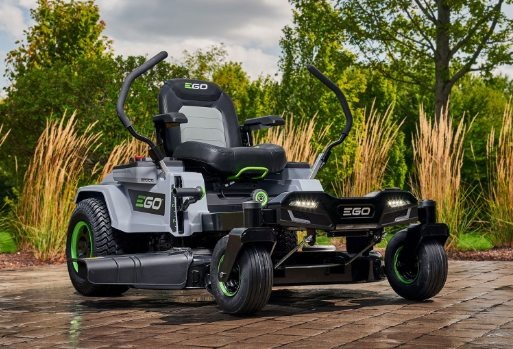
My preferred electric zero-turn is Ego Power+ if you need to cut precisely in confined spaces and have perfect mower control.
When it comes to battery-powered riders, the EGO 56V battery-powered zero turn riding mower is a game changer. It costs more than some of the other options, but it also has a better design. In our opinion, the design team clearly did their research because EGO has produced the best battery-powered residential zero turn options.
Let's not undervalue the significance of EGO's design. They utilize the same batteries as the rest of their tools by utilizing their 56V battery and Peak Power technology. You can remove them to use them in other EGO 56V tools or add more runtime to your mower by using the batteries you already have. If you need to cover a larger area than what a single set of batteries can provide, you can also switch out the batteries.
There is a minimum capacity you need to reach if you want to swap in other packs. Any combination of batteries totaling at least 15Ah starts the mower, which we tested with batteries rated at 10, 7.5, 5, and 2.5 Ah.
4. Smallest Riding Mower - RYOBI 48V Electric Rear Engine Mower 30-In
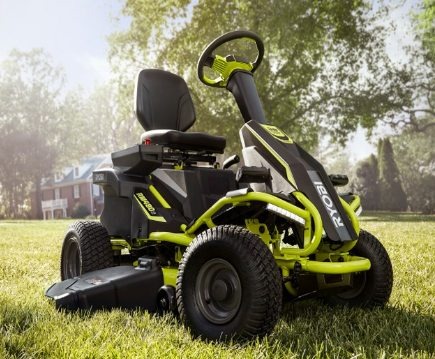
This nimble 30-inch mower is ideal for small residential lawns up to 1 acre in size thanks to standard steering wheel control.
For an electric riding mower, the vast majority of reviewers thought the Ryobi RY48111 was a good option. Numerous users were delighted by its superb steering and turning radius, which most even compared to a zero-turn mower. It was simple to operate and maintain the mower thanks to its many features. The RY48111 did not have the same amount of power as its gas-powered counterpart, which was to be expected, and it could have been more comfortable to ride. However, the Ryobi RY48111 is a good option all around if you have a flat yard and want to avoid the hassles of maintaining a gas-powered mower.
5. Best Small Riding Lawn Mower for Budget - Snapper 2911525

Due to its small cutting deck and compact design, this mower has excellent maneuverability and can operate in confined spaces.
Due to its small size, the Snapper Classic Rear Riding Lawn Mower is perfect for yards with limited space. The biggest disadvantage, regrettably, is the cutting radius of 28 inches. The turning radius is extremely small, but it can pass through smaller obstructions. Using this technology, you can cut the grass in some of the smallest areas without having to worry about catching on something.
A rear-mounted, pro-grade Briggs & Stratton Intek engine with 11.5 HP powers the Snapper 28″ Riding Mower. It will withstand years of mowing thanks to the durability and dependability of the OHV engine. Also included with the engine is ReadyStart Technology, which eliminates the need for priming or choking during startup and makes it simple and reliable. The mower can be turned off by turning the key or pulling on the pull-start button. This engine has a vibration system in addition to a debris management system that ejects and deflects grass and other debris to keep the engine cleaner and longer-lasting.
Why a Compact Riding Mower
If you don't have time to read the entire review, here are my top picks for the best small riding and zero-turn mowers. I also thought I should include the smallest ride-on mower that is actually worthwhile.
- Comfort and Speed are key benefits. Who can argue with sitting on a mower and getting the job done in a fraction of the time it would take with a walk-behind a mower
- Garden Layout and Obstacles spin on a 0-degree radius or power up 30-gradient hills
- Versatility towing fertilizer spreaders, leaf sweepers, or a trailer full of logs
Comfort and Speed
Small riding lawnmowers have many comfort features and operate more quickly than walk-behind mowers, allowing you to maintain your lawn more quickly and comfortably. Most compact riding lawn mowers have high-back ergonomic seats and armrests that can be adjusted to accommodate tall and short users. Additionally, you can find models with gripped, foam-padded levers to keep you comfortable while mowing.
You probably already know that riding lawnmowers and tractors travel over ground more quickly than their walking counterparts. They are safe to use at a relatively high speed because their center of gravity is low. They have wider cutting decks than walk-behind mowers as well, allowing you to mow more ground with fewer passes.
Finally, their excellent maneuverability increases mowing efficiency because they need less time to turn, change directions, or travel between two points.
Garden Layout and Obstacles
You've seen the lawns with the perfectly straight stripes. Aiming for a comparable result? This is feasible with a small riding lawnmower or tractor.
These machines are very maneuverable, allowing you to easily change your mowing directions to produce such attractive patterns.
There is no need to repeat the cut to get that tuft of long grass missed when turning because zero-turn mowers even spin in a zero-degree radius, cutting every blade of grass.
More Versatile
A compact lawnmower has more applications than a standard mower. It is incredibly maneuverable and more stable when used on uneven terrain. The same holds true when discussing hills, incline, or even ground. On a soggy lawn, the big tires also provide excellent traction.
But perhaps what sets it apart is the wide range of attachments that can be towed. If you add a mid-mount deck below the machine, it can function as a mower. To work across wide areas, you could instead attach a rotary cutter behind it. Last but not least, a compact tractor can assist you in moving gravel, dirt, or snow as well as clean up your lawn by towing a lawn sweeper behind it.
What to Chosider When Buying Riding Lawn Mowers
Comfort & Controls
Always keep comfort in mind before making your purchase because mowing requires prolonged sitting. For the utmost comfort, pick a riding mower with ergonomic features like a padded cushion, an adjustable seat, and a cushioned armrest.
The best small lawn tractors and riding mowers also have precise controls and excellent maneuverability. Consider choosing dependable tires with superb traction and cozy levers. Also, don't forget to add the required cupholder and cruise control.
You don't need to worry too much about comfort and controls because, in general, the small riding mowers and tractors on my list provide excellent comfort and controls.
Transmission Type
A dependable mower with the ideal transmission will offer the best speed and handling. The top mowers allow you to cut grass at amazing speeds and provide superb handling in a variety of terrain. Generally, you'll choose between these two transmissions:
Manual Transmission
The manual transmission, which is popular in older riding mowers and lawn tractors, allows you to select the speed level you prefer using a lever and clutch similar to that found in a manual car. If you are able to control speeds with a pedal or gear stick, that may be ideal.
Hydrostatic Transmission
Many small riding lawn tractors and grass cutters have this type of transmission as their standard. It is also known as an automatic transmission. By depressing the pedal, you can easily change gears in this transmission, which is highly effective and powerful. In general, mowers with hydrostatic transmissions require less maintenance and perform more smoothly.
Engine Power: Gas Or Battery
Gas is the most common power source for small riding mowers. Others, however, require charging before use because they operate on batteries. Which one ought you to choose? Let's explore the two options:
Gas-Powered Riding Mower
Riding lawn mowers with gas engines are well known for their power. To some extent, this is accurate. In other words, not all gas engines are created equal.
While some engines, like those produced by Honda, Kawasaki, or Briggs & Stratton, are built with exceptional engineering and are known for their dependability, other engines are produced in-house and are only passably good.
In comparison to electric ride-on mowers, you can be sure that there is a much wider selection of mowers available when using gas-powered equipment. On the larger mowers with big powerful engines, there's no doubt they are going to deliver more horsepower than an electric motor, but they come with a few downsides too:
- Maintenance. Gas-powered mowers require maintenance, such as service intervals to switch out drive belts, spark plugs, filters, etc
- Gasoline. It can get messy and smelly when it comes to refueling your ride on a gas mower
- Emissions. When I say emissions I am talking about the environmental pollution, fumes, and noise population
Battery-Powered Riding Mower
If you're concerned about "green" landscaping and noise-free mowing, you already have enough reasons to favor an electric ride-on lawnmower.
In response to criticism of gasoline lawnmowers, electric riding mowers were developed. Many of the annoyances associated with gas-powered mowers are eliminated by battery-powered mowers. For instance, there is only a maintenance-free motor, so there is no need to worry about an engine.
In residential settings, they have a significant advantage over gas because they operate more quietly. Additionally, they frequently exhibit greater dependability. Once activated, they leave.
However, unless you have multiple sets of battery cells, their functionality is restricted to a particular mower's runtime on a single charge. Despite being less expensive and simpler to maintain, these machines cannot be used for other tasks. The power might not be enough to cut your entire lawn in one sitting if you forget to charge the battery or have a large area to clear. Thus, pay close attention to the battery capacity in the following product review.
Run Time: Fuel Or Battery Cell Capacity
In the shortest amount of time possible, your small riding mower ought to be able to mow the entirety of your lawn. The machine's weight, age, your yard's terrain, and how aggressively you drive it are some of the different factors that affect how long it can run.
Mowers with gas engines don't have the same runtime as those with batteries, but you can simply add more gas as you use it. On the other hand, battery life is limited and has a set amount of time before it is exhausted. Then you have downtime while the batteries recharge. Therefore, you must complete the task in one sitting.
The battery storage capacity, measured in amps per hour, or amp hours (Ah), will determine how long your ride-on mower will operate.
Amp Hours (Ah) Explained
Current flow is measured in terms of amperes (Amps). In other words, a battery charge that can sustain a constant current flow of one ampere for an hour is called an ampere-hour. For instance, a 3 Ah battery can sustain a steady flow of 1 amp of current for more than 3 hours.
In other words, your battery will run longer if its Amp Hour rating is higher. Your small ride-on mower now has multiple battery cells. Assume they have four 10Ah batteries. You will receive a total of 40Ah as a result. This is adequate for lawns between one and two acres in size; for larger lawns, look for 60 to 100 Ah.
Many electric ride-on lawn mowers allow for the addition of extra battery cells. Take the Ego Power+ Zero Turn Mower as an example. It comes with 4 x 10Ah batteries but has the ability to accept an additional two batteries, making it capable of holding up to 6 x 10Ah (60Ah total). This will allow you to cut for 3 acres.
Cutting Deck
However, despite the fact that for many landscapers this merely serves as a protective covering for the lawnmower's cutting area, this material has many other advantages as well. The cutting deck reduces the risk of flying debris while in use, and the machine's overall durability and cutting time depend on its design.
Consider the following elements when looking for the right lawnmower-cutting deck for your yard:
Stamped Vs. Fabricated Deck
The cutting deck on your small riding lawn mower is either stamped or manufactured. The two choices differ in terms of their designs, cutting capabilities, and overall strength and durability of construction.
Fabricated Cutting Deck
Commercial riding lawnmowers frequently have this type of mower deck, which is made of thick steel plates that are welded together. The mower won't necessarily be better because of this, but it will be more rigid and durable.
Due to their frequent use on a variety of terrains, commercial mower decks experience increased wear and tear. A prefabricated deck is ideal in this situation.
Stamped Cutting Deck
This deck type is "stamped" from one piece of steel, usually thinner and lighter in weight than its fabricated counterpart. The airflow is better, and its capabilities are much more flexible. A stamped deck is ideal if you simply need a lawnmower to cut your lawn once a week and you have a residential lawn that is largely devoid of bricks, obstacles, and other similar features.
Deck Width
Ideally, your machine should be able to cut a wider strip in a single pass. How do you locate one, though? The lawnmower's cutting width, which is directly inversely proportional to the size of its cutting deck, determines everything. Spending less time cutting your lawn requires a wider cutting width.
The ideal cutting width for a small riding mower ranges from 30–42 inches for an acre to at least 60 inches for five acres. The width of the cutting deck on your small lawnmower is proportional to the number of blades it has. A smaller tractor has one blade, while standard ZTR mowers and lawn tractors have two to three.
Avoid the temptation to purchase the widest cutting deck you can find because doing so may restrict how much mobility your mower has. A smaller self-propelled mower can easily cut through tight spaces and muddy grounds.
Deck Cutting Heights
The majority of small riding tractors and lawnmowers have a movable deck. For lifting the deck when navigating obstacles, the majority of small ride-on mowers have hand and foot levels. This is advantageous because you won't have to leave the machine to raise the deck.
If you have to get off, it's best to pick a grass cutter with add-on kits that facilitate deck-lifting without needless stops.
Verdict: Best Small Riding Lawn Mower
Small riding tractors and lawnmowers are available in a wide range. The Greenworks 60V CrossoverT is the best product on the market and stands out for its exceptional runtime, strong deck, and strong deck. The best small riding mower is the RYOBI 48V electric rear engine mower, and the best zero turn mower is the EGO Power+ Z6.
Latest Updated
- Benefits of Bugleweed - 7 Science-backed Health Benefits
- Bugleweed Dangers & Side Effects - Is It Poisonous?
- How to Plant Evergreen Trees - What You Should Know
- When to Plant Evergreens - Grow Guide for Evergreen Trees
- 12 Wonderful Evergreen Shrubs for Your Garden
- 12 Popular Evergreen Plants with Pictures for Beginners
- When And How To Prune A Lilac Bush Like a Pro
- How to Grow & Care for Lilac Vine (Hardenbergia Violacea)
- Japanese Lilac Tree (Syringa Reticulata) Care & Propagation Guide
- Shumard Oak Pros and Cons - What to Know
Popular Articles
- Winter maintenance of Antirrhinum Majus
- How to Grow Terminalia Mantaly Tree
- How to Grow and Care for Crossostephium Chinense
- How to grow Antirrhinum Majus in spring
- Peristeria Elata (Dove Orchid) Profile: Info & Care Guide
- Underwatered Snake Plant (Sansevieria Trifasciata) - Signs And How To Fix
- How to Care for Brazilian Jasmine Plant (Mandevilla Sanderi)
- How to Grow & Care for Graptopetalum Purple Delight in Summer
- Rosa Chinensis (China Rose): Plant Growing & Care Tips
- How to Care for Baby Sun Rose (Aptenia Cordifolia)